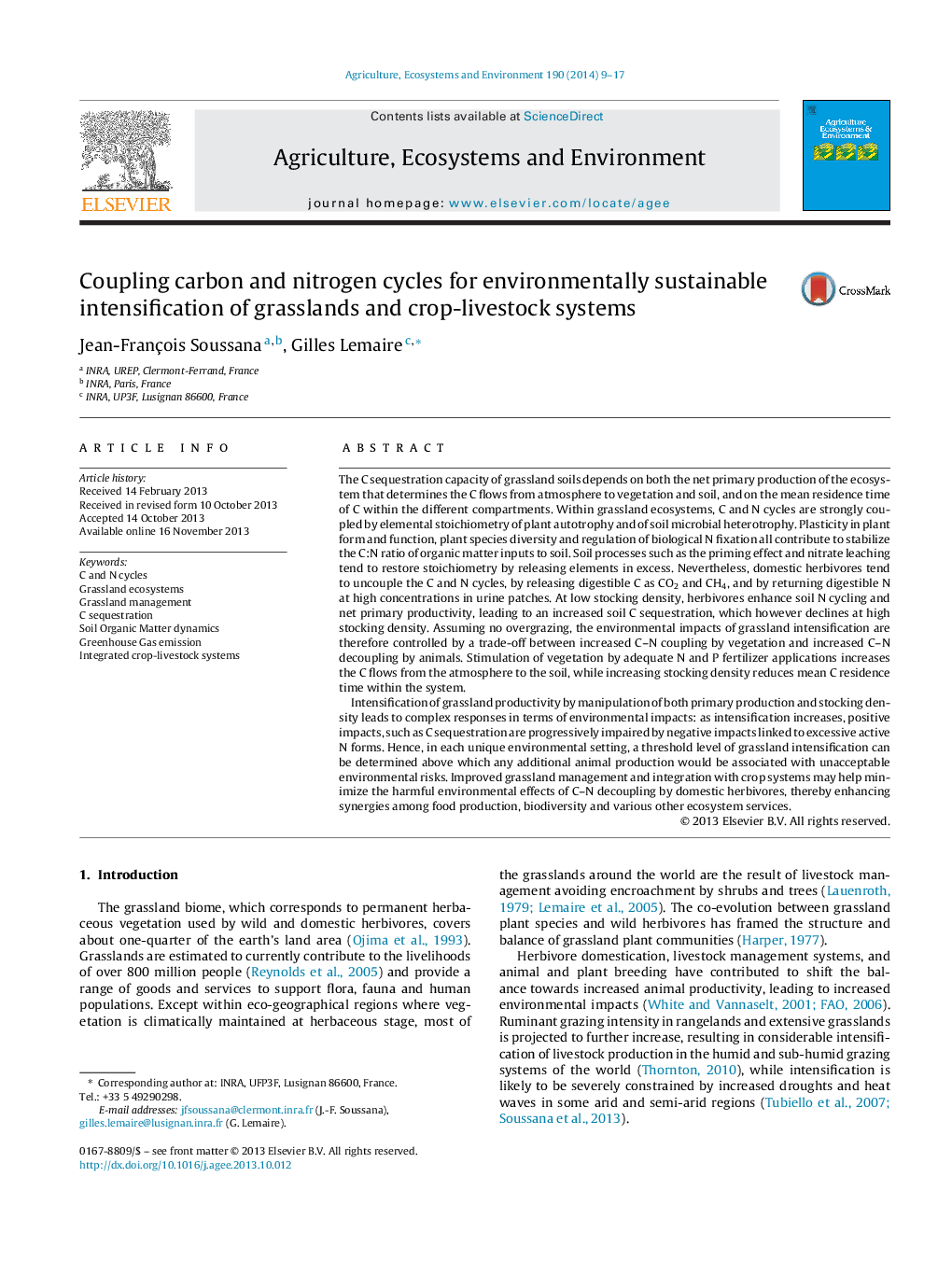| کد مقاله | کد نشریه | سال انتشار | مقاله انگلیسی | نسخه تمام متن |
|---|---|---|---|---|
| 2414015 | 1552062 | 2014 | 9 صفحه PDF | دانلود رایگان |
• C sequestration depends on the net C flow and C mean residence time.
• C and N are coupled by elemental stoichiometry in plants and soil microbes.
• Herbivores uncouple C and N by releasing C in atmosphere and concentrating N in urine.
• Intensification leads to trade-offs between grassland productivity and environment.
• Mitigation options are proposed for sustainable grassland intensification.
The C sequestration capacity of grassland soils depends on both the net primary production of the ecosystem that determines the C flows from atmosphere to vegetation and soil, and on the mean residence time of C within the different compartments. Within grassland ecosystems, C and N cycles are strongly coupled by elemental stoichiometry of plant autotrophy and of soil microbial heterotrophy. Plasticity in plant form and function, plant species diversity and regulation of biological N fixation all contribute to stabilize the C:N ratio of organic matter inputs to soil. Soil processes such as the priming effect and nitrate leaching tend to restore stoichiometry by releasing elements in excess. Nevertheless, domestic herbivores tend to uncouple the C and N cycles, by releasing digestible C as CO2 and CH4, and by returning digestible N at high concentrations in urine patches. At low stocking density, herbivores enhance soil N cycling and net primary productivity, leading to an increased soil C sequestration, which however declines at high stocking density. Assuming no overgrazing, the environmental impacts of grassland intensification are therefore controlled by a trade-off between increased C–N coupling by vegetation and increased C–N decoupling by animals. Stimulation of vegetation by adequate N and P fertilizer applications increases the C flows from the atmosphere to the soil, while increasing stocking density reduces mean C residence time within the system.Intensification of grassland productivity by manipulation of both primary production and stocking density leads to complex responses in terms of environmental impacts: as intensification increases, positive impacts, such as C sequestration are progressively impaired by negative impacts linked to excessive active N forms. Hence, in each unique environmental setting, a threshold level of grassland intensification can be determined above which any additional animal production would be associated with unacceptable environmental risks. Improved grassland management and integration with crop systems may help minimize the harmful environmental effects of C–N decoupling by domestic herbivores, thereby enhancing synergies among food production, biodiversity and various other ecosystem services.
Journal: Agriculture, Ecosystems & Environment - Volume 190, 1 June 2014, Pages 9–17
